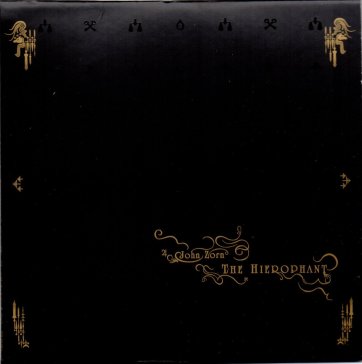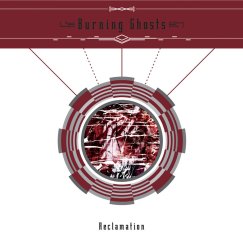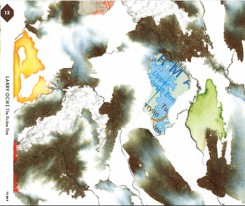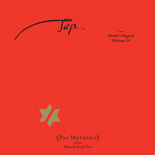Raskin and Harryman appear Weds., July 18, at the Outsound New Music Summit, and they’ve got a KFJC appearance Sunday night, July 15. Details below.
Jon Raskin and Carla Harryman — Open Box (Tzadik, 2012)
 For Open Box, Jon Raskin wrote music to frame the poems of Carla Harryman. It sounds artsy and serious, but the album starts with a sucker punch: the searing metal of electric guitars.
For Open Box, Jon Raskin wrote music to frame the poems of Carla Harryman. It sounds artsy and serious, but the album starts with a sucker punch: the searing metal of electric guitars.
That track, “Fish Speech,” isn’t typical of the rest of the album, but it serves to upend your expectations, setting you up for a variety of music and moods.
You’d expect Raskin, the “R” in the ROVA Saxophone Quartet, to back Harryman’s abstract word collages with equally abstract music, maybe something improvised or driven by a graphical score. And you’d be right — but he applies other ideas as well, putting to work different combinations of Bay Area and former Bay Area musicians in a total project that took three years to complete.
“Fish Speech” dangles sharp-edged guitar and bass over bleak verbal images of the nothingness before time. The words alternate between power and whimsy. (“There were no stories or bones … no lizards, pelicans, or fish.”) But the music sticks to the “power” side, conjuring an empty, chthonic universe — a “nothingness” that’s writhing and explosive, like the near-infinite heat in the microseconds following the Big Bang.
 That piece gets an extra edge early on, when the vocals shift from Aurora Josephson’s silkiness to a harsher voice that I’m guessing is Roham Sheikhani. His accented, staggering voice arrives stern and biting: “Silence was neither dominant nor peaceful nor silent. There was no sound or smell.”
That piece gets an extra edge early on, when the vocals shift from Aurora Josephson’s silkiness to a harsher voice that I’m guessing is Roham Sheikhani. His accented, staggering voice arrives stern and biting: “Silence was neither dominant nor peaceful nor silent. There was no sound or smell.”
But the album spends longer stretches on improvised music — a suitable backing to the work of Carla Harryman, a teacher at Eastern Michigan University and Bard College whose work is categorized with avant-garde language poetry.
Harryman’s work is indirect, as you’d expect. We’ve all been exposed to that kind of poetry, but in listening to Open Box, I tried to pay particular attention to the words. Sometimes, I tried immersing myself in the language, the specific syntax; other times, I could let the words flow through my ears, like a kind of music, a language not intended for directly semantic interpretation.
The two-part title track is built of fragmented and purposefully incongruous phrases, like the framework of a framework, delivered in plain-fact style by Raskin and Harryman. Ideas appear in long expositions such as: “The psyche of the poet exceeds the poem without the poem disappearing into an exterior world in which the poem cannot survive / The poem is therefore a representation of an edge performed in other worlds, not this / Once /”

 It’s during the closing minutes of Part 2 that Raskin and Harryman diverge, reaching completely separate parts simultaneously. Even with their voices reading calmly, the tension wells up quickly as their non-thematic lines shove one another out of the way. I found my ears hearing one, then the other, as if the words were two colors of ribbon spiraling in front of me. It’s a good effect, creating a coda without having to superficially punch up the music.
It’s during the closing minutes of Part 2 that Raskin and Harryman diverge, reaching completely separate parts simultaneously. Even with their voices reading calmly, the tension wells up quickly as their non-thematic lines shove one another out of the way. I found my ears hearing one, then the other, as if the words were two colors of ribbon spiraling in front of me. It’s a good effect, creating a coda without having to superficially punch up the music.
The music follows a similar path, free improvisation in small motions, like construction activity going on in the background: sparse, rattly sounds from percussion, guitar, and electronics, and the occasional sweetness of Raskin’s sax or, in Part 2, the crinkle of Liz Allbee’s trumpet.
I find myself being drawn back to “A Sun and Five Decompositions,” which somehow feels like more of a narrative flow, maybe because of the balletic and criss-crossing among the three speakers (Josephson, Sheikhani, and Harryman) and the music’s interplay with the words. Blips of sax, guitar, and percussion build and release tension in time with the moods of the intertwined spoken parts — three speakers calling-and-responding, sometimes repeating one another’s phrases or meeting in unison briefly. You get the sense of the voices having been orchestrated, a foreground scored to sit with the musical improvising.
It’s serious, and yet … there’s a passage where “Don’t be silly!” appears right after someone says “potato head.” Josephson does a particularly good job changing voices throughout the piece, ranging from poetic seriousness to flighty dingbat.
But I’d started off talking about variety: “JS Active Meme” closes the album with blistering guitars, a psychedelic sunburst. “Song for Asa” is an actual song, crooned by Aurora Josephson against long tones of sax, then it turns into a quietly bubbling improvisation, with small, popping vocalizations and crackling electronics sounds. The singing, coming up in the middle of the album is an odd sensation after an half our or so of spoken word.
Raskin and Harryman, will be participating in the “Sonic Poetry” night of the annual Outsound New Music Summit, on Weds., July 18 in San Francisco. Their set will include Gino Robair on piano.
And Harryman and Raskin will also be on KFJC-FM on Sunday, July 15, sometime between 8:00 p.m and 10:00 p.m., to discuss their collaboration. Details on Facebook.

















